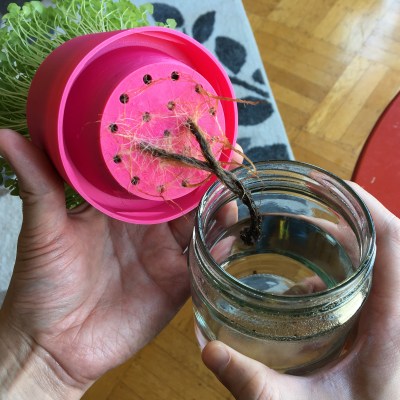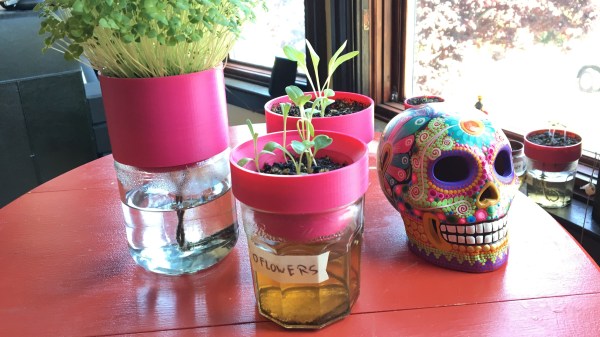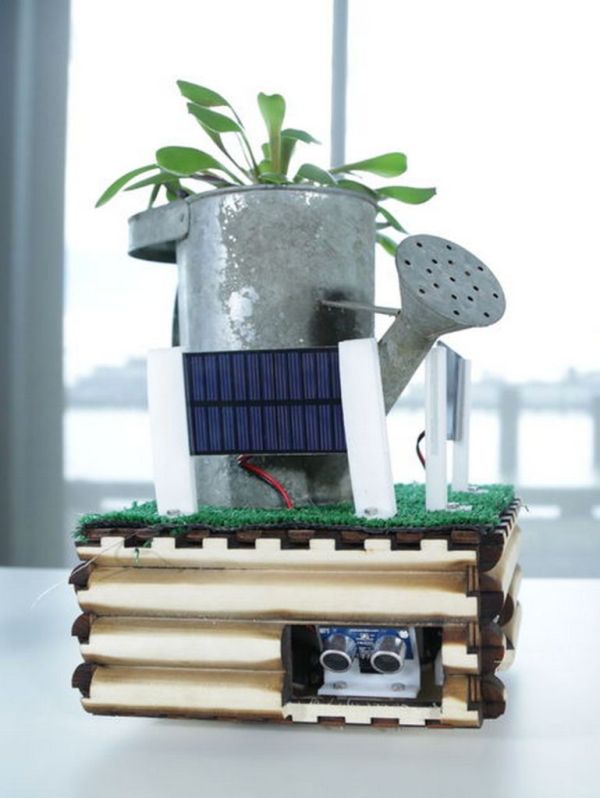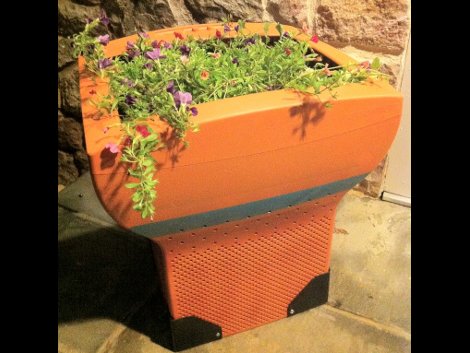Self-watering planters are low-maintenance, and common DIY projects. What we like most about [Tommy]’s design is that it reuses empty jars to create self-watering planters. After all, jars are fantastic at reliably holding water, so why not put them to work? Incorporating jars as part of the design means fewer worries about leakage, but it also means less 3D printing is needed overall.

[Tommy]’s planter screws onto the threads of a jar’s neck. Getting water to the plant is helped by a small piece of string, which acts as a wick between the soil at the top and the water in the jar at the bottom. This design works best with small plants, but on the plus side there are no moving parts or other complexities. Got a 3D printer? Models for the planter are available here.
The biggest challenge for this design is that not all jar threads are alike, so planters made in this way are not completely interchangeable across all different types of jars. Fortunately, [Tommy] provides the OpenSCAD code he used to generate his design, which he created with the help of an industry guide on how to measure the finish (or threads) of jars and lids.
If you find yourself needing to further customize your own version to fit a particular container’s threads, there’s no need to start from scratch. Unsurprisingly, threads and lids are highly standardized so chances are there exists a calculator, tool, or existing model for exactly what you need.













